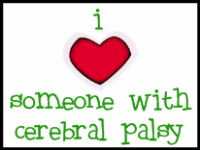Like Sarah, survivors of neonatal meningitis are more likely to have moderate-to-severe disabilities than are other children, including cerebral palsy, seizures, cognitive and learning deficits, visual and hearing problems, and often other, more subtle disorders. Growing up with the long term effects of neonatal meningitis, or persistent brain injuries, means taking each new day one step at a time. Among the various treatments we have experienced are:
- Drug therapy to prevent or control seizures associated with her cerebral palsy (CP) and/or to help reduce painful spasticity in her muscles.
- Botox injections to provide reduced spasticity, increase range of motion, and reduce continuous fisting of her hands.
- Gait training using a special device that simultaneously controls Sarah's weight-bearing ability, posture, and balance over a treadmill or over ground.
- Patterning (both physical and auditory), in which Sarah lies down while others move her arms and legs or repeat sounds (often with music) for mimicry in a way that is said to stimulate brain activity.
- Dietary considerations to watch her weight since she's not as mobile as we hope she will become.
Below is a short video clip that demonstrates how a gait trainer is used. For now, Sarah must use her wheelchair most of the time, and, of course, she's much younger than the young child viewed in the video. But as Sarah faces her challenges, every day brings new advances -- step by step.











0 comments:
Post a Comment